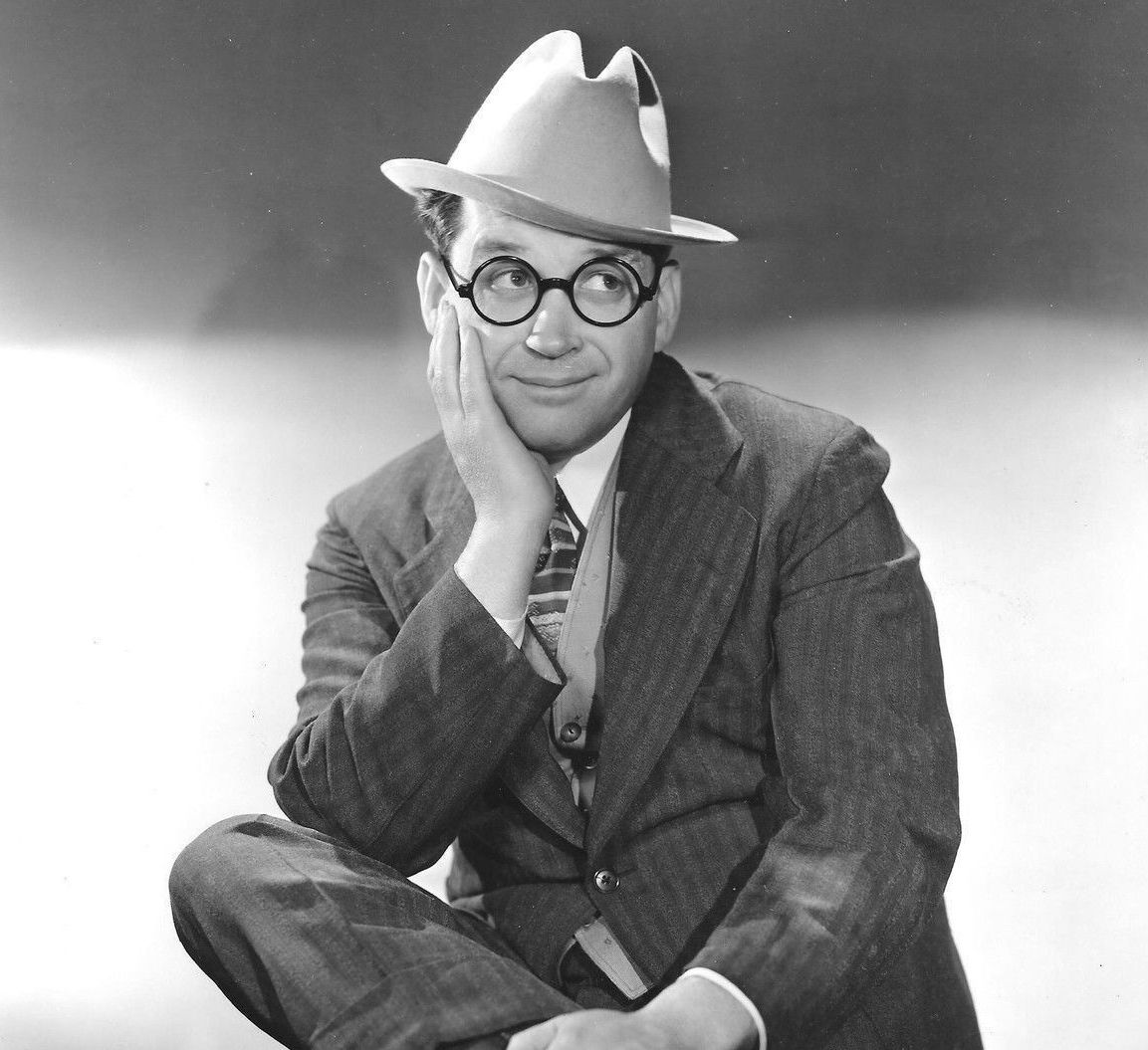Happy Birthday, Jim Jordan!
Posted by Ivan G. Shreve, Jr. on Nov 16th 2017
During my formative nostalgia years, my sisters and I rarely went to the movies unless there was a “G” rating attached and “Disney” mentioned somewhere in the credits. We saw all the new Disney films and re-releases, and such was the case in 1977 when the Walt Disney studios unveiled their latest animated feature The Rescuers—based on the book series created by Margery Sharp. The movie was about a pair of mice (they work for an organization known as The Rescue Aid Society) who help a little girl escape the evil clutches of a villainess colorfully dubbed Madame Medusa. It provided much entertainment for me, because I got such a kick out of the vocal talent. The mice, Bernard and Bianca, were voiced by Bob Newhart and Eva Gabor, for example, with Madame Medusa’s ineffective henchman Snoops played by Disney mainstay Joe Flynn (his last feature film work before his passing in 1974).
There was a minor character named Orville, an albatross who provided the transportation for the film’s rodent heroes to journey to the bayou where the little girl was being held captive. From the moment Orville opened his mouth I knew right away the identity of the actor who lent his voice to this fine-feathered friend; my blossoming love for old-time radio came to the fore as I shouted out “It’s Fibber McGee!” (I believe both of my sisters relocated to another section of the movie theatre following my outburst.) Jim Jordan, born just outside—where else?—Peoria, Illinois on this date in 1896, did indeed voice Orville; it would be his last feature film credit before retiring a few years later. He had certainly earned a rest after a lifetime of entertaining radio audiences as one-half of the medium’s most beloved comedy couples.
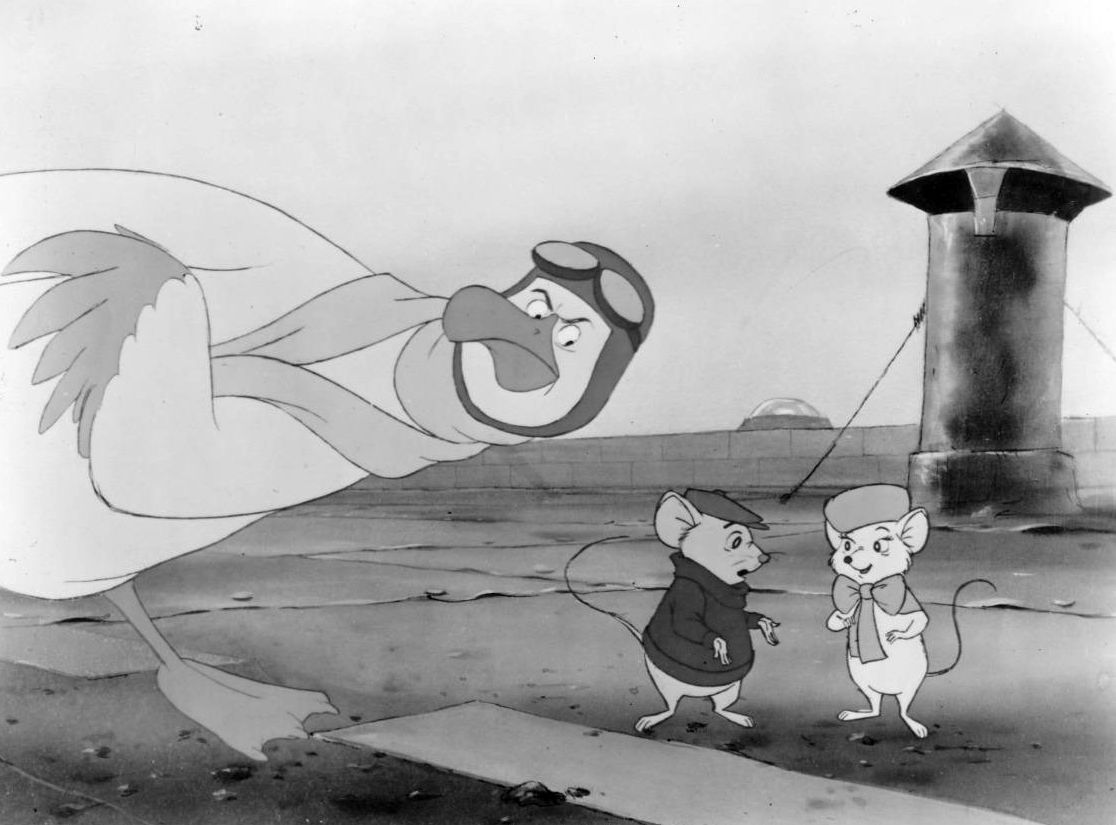
For young James Edward Jordan, life in Illinois loosely translated to life on a farm. His family eventually “moved to town” in time for him to complete eighth grade at St. Marks School, and then transition to Peoria’s Spaulding Institute for a few more years of formal training. Across the street, his future wife Marian Driscoll was enrolled at the Academy of Our Lady…though the couple wouldn’t officially meet until December of 1915, at a Christmas choral rehearsal for St. John’s Catholic Church. Jim and Marian bonded over their love of music; Jim was singing tenor with a local trio while Marian was a contralto who played both piano and violin. They began dating in January of the following year when Marian invited Jim to a piano recital.
Both Jim and Marian had boundless ambition to be entertainers, and while Jim made inroads into this by getting work as a tenor singer with a Chicago vaudeville act, his work often kept him on the road…and he missed Marian terribly. Returning to Peoria, he found work as a mail carrier, while Marian made ends meet as a piano coach. Jim was able to win over Marian’s family when he asked for her hand in marriage, and they tied the knot on August 31, 1918. He got a letter from his Uncle Sam just five days later and was shipped to France, where his exploits during WWI would become legend. Okay—that’s a tall tale worthy of Fibber McGee; Jordan contracted dysentery not long after his arrival and was hospitalized long past the Armistice signing. He served out his hitch touring U.S. hospitals throughout France as part of a military camp show.
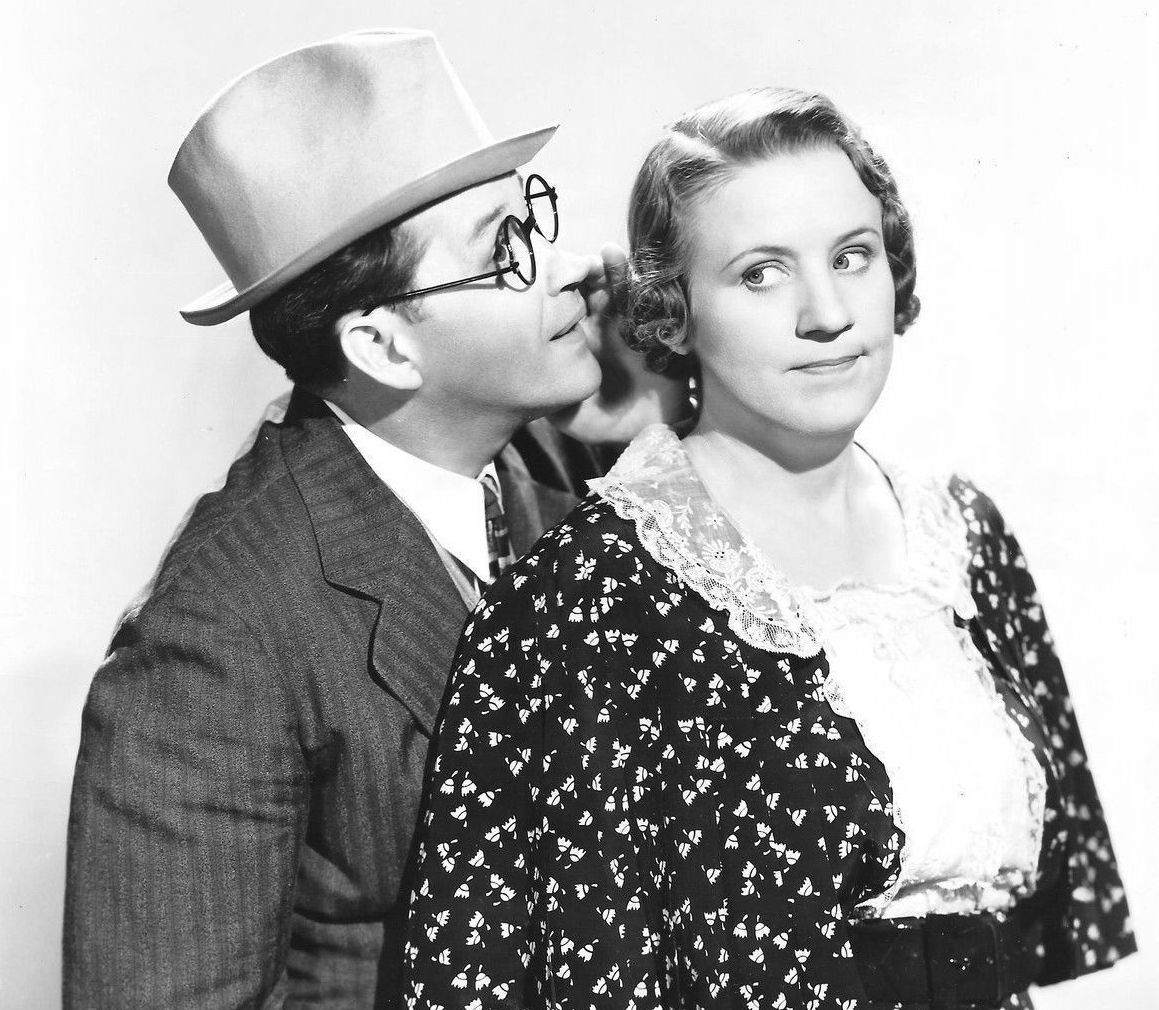
Returning stateside, Jim Jordan worked any number of odd jobs (selling vacuum cleaners, washing machines, and life insurance) before deciding to give show business another try…and suggesting that wife Marian join him as his partner. Performing in vaudeville was not always peaches and cream; the Jordans started out well but ended up broke. (Jim had to wire his family for money at one point in 1923 so they could return home.) Their home life encountered instability as well, particularly after the births of daughter Kathryn (1920) and son Jim, Jr. (1923). Marian elected to stay home to look after their kids while Jim continued with the vagabond vaudeville life, interrupted by periods of employment as a dry cleaner and selling toys in a department store.
Radio would be the Jordans’ ticket into show business. Goaded by his brother Byron into performing at a Chicago station (after Jim bragged that he could give a better performance than the act that was on the air), WIBO hired both Jim and Marian to perform as The O’Henry Twins in 1926 for $10 a week. It wasn’t huge money, but the couple worked at enough radio stations to keep body and soul together. At WENR, Jim and Marian were the stars of The Smith Family, an early example of daytime drama that a few radio historians have suggested may have been the first radio “soap.” At WMAQ, the Jordans headlined a weekday comedy serial entitled Smackout that became so popular it eventually moved to the national NBC Blue network.
The writer on Smackout was Don Quinn, who became acquainted with Jim and Marian at WENR in their Smith Family days (and he wrote for that program as well). Quinn would create Fibber McGee and Molly for the couple, which got the greenlight as a half-hour comedy program for Johnson’s Wax beginning April 16, 1935 over NBC. (They were championed by the wife of ad executive John J. Louis, who suggested that the stars of her favorite show [Smackout] would be perfect for the new Johnson’s venture.) The Johnson’s Wax Program with Fibber McGee & Molly started out slow in the ratings, but a few years later it was on its way to becoming a Tuesday night institution (the Jordans and Bob Hope were a one-two punch that clobbered any competition in the ratings). Jim and Marian soon joined the ranks of radio’s top funsters, along with such popular mirth-makers as Hope, Jack Benny, and Edgar Bergen (and Charlie McCarthy).
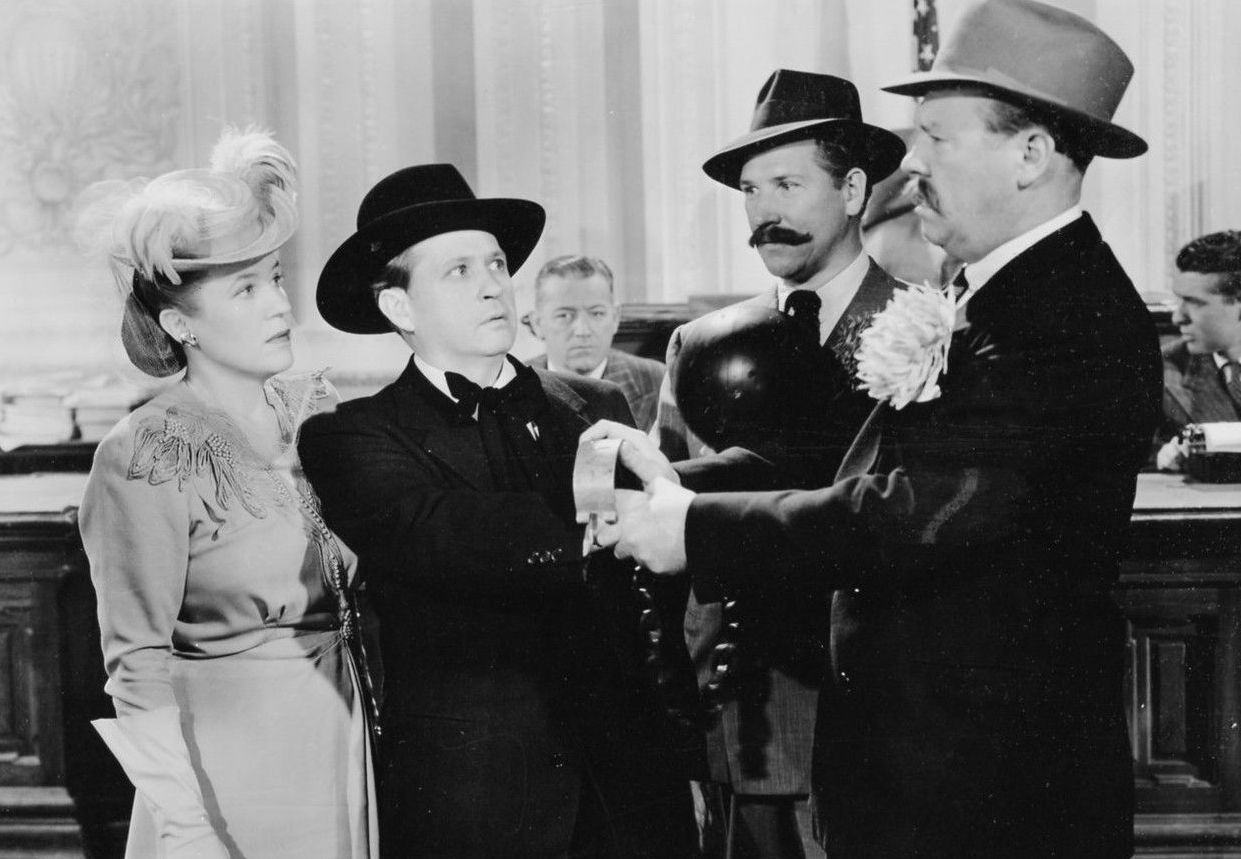
Jim and Marian Jordan portrayed “Fibber McGee and Molly” from 1935 to 1956, and for a period in the late 1950s appeared in short skits on NBC’s Monitor. The couple enjoyed radio immensely and were a rarity in that they chose not to make the transition to television like so many of their fellow clowns. (When Fibber McGee & Molly did finally arrive on the small screen in 1959, the characters would be played by Bob Sweeney and Cathy Lewis). The Jordans did do a little work in motion pictures, beginning with 1937’s This Way Please…and with Edgar Bergen and his dummies headlined two successful movies in Look Who’s Laughing (1941) and Here We Go Again (1942). But with the completion of Heavenly Days in 1944 (sans Bergen and the gang), the duo pretty much stuck to radio (though they did appear in the occasional film short). The Jordans were quite content portraying the wacky couple from Wistful Vista, whether it be on their own show or guest starring on someone else’s. When the Jordans appeared on Suspense on February 3, 1949 for a classic episode entitled “Backseat Driver”…they were billed as Fibber McGee & Molly.
Marian Jordan passed away in 1961, which necessitated that Jim Jordan carry on solo. He did several TV commercials as his famous radio character (fittingly for Johnson’s Wax) and made the rounds on small screen talk shows (Jack Paar, Mike Douglas), with an occasional guest appearance – like his memorable turn on a 1976 episode of the sitcom Chico and the Man. One of Jim Jordan’s last radio assignments before he slipped into semi-retirement was a February 20, 1979 appearance on The Sears Radio Theatre (“The Troublemaker”). I remember it only because I had difficulty wrapping my mind around listening to “Fibber McGee” swearing (and it wasn’t “dadrat the dadratted”). Jim Jordan would eventually join his longtime radio spouse Marian when he, too, went on to his greater reward in 1988 at the age of 91.
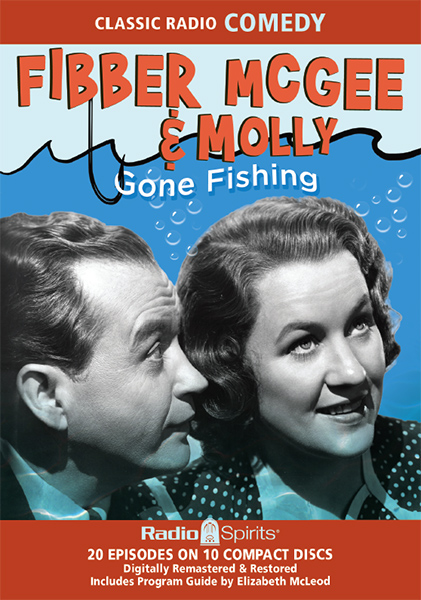
As we edge closer and closer toward the holidays, Radio Spirits believes that it’s not a proper Yuletide celebration unless you’re listening to Fibber, Molly, and all the Wistful Vista regulars on such Christmas compilations as Christmas Radio Classics, The Voices of Christmas Past, and Radio’s Christmas Celebrations. You can also hear today’s birthday boy in our potpourri collections of Comedy Goes West and Great Radio Comedy…plus the origins of McGee’s famed hall closet can be tuned into on Burns and Allen: Gracie for President. Of course, for pure undiluted Wistful Vista fun, be sure to check out our newest Fibber & Molly set Gone Fishing…and past releases Wistful Vista, For Goodness Sakes, and Cleaning the Closet (with liner notes by me!). I don’t care if Molly thinks your jokes “t’aint funny”—you always brought a smile to my face, and I wish you the happiest of birthdays!

